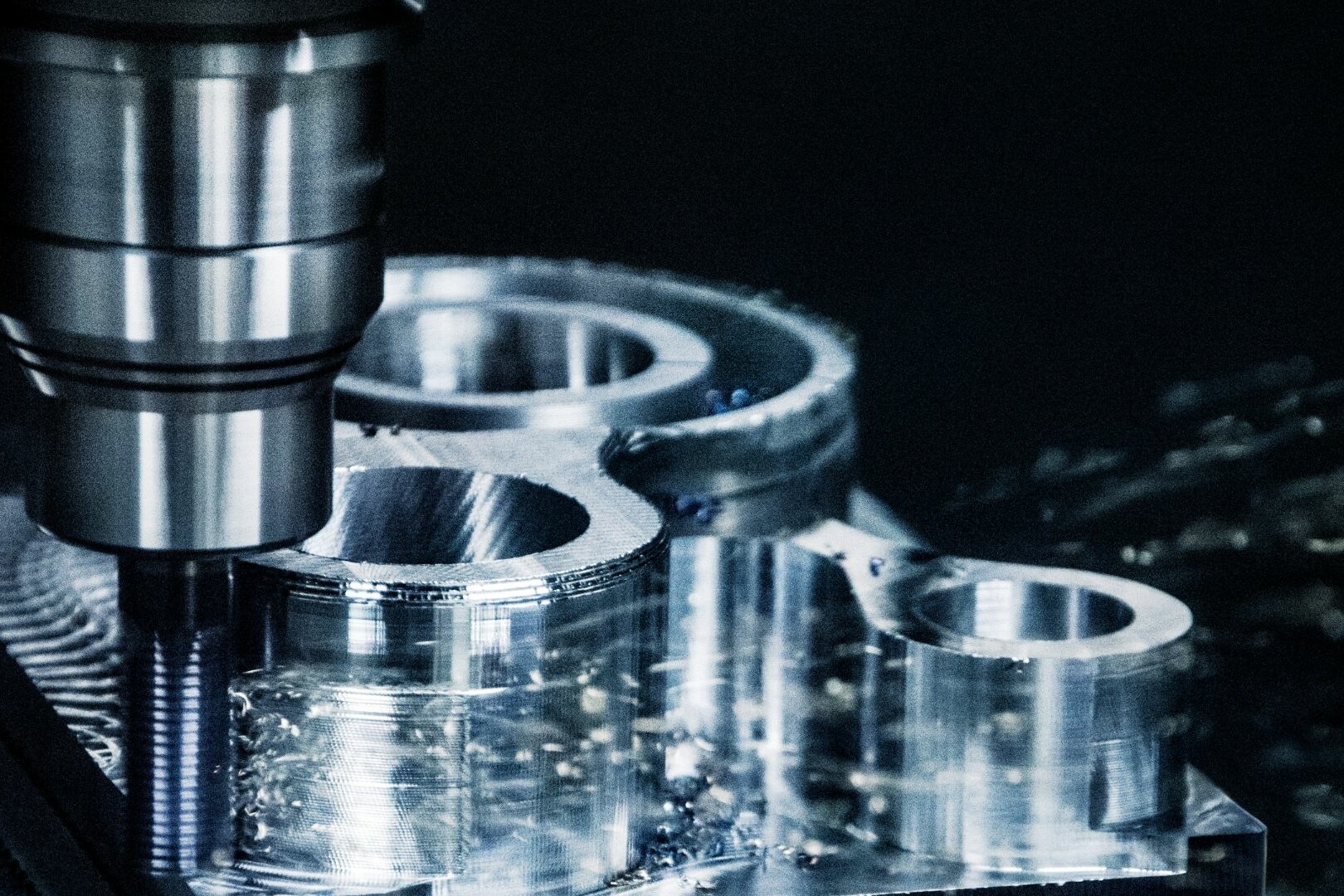Predictive maintenance involves using historical data, analytics, and cutting-edge technologies to anticipate potential equipment failures. Unlike reactive maintenance, where repairs occur after a breakdown, predictive maintenance allows organizations to address issues before they lead to costly disruptions and for understanding the significance of predictive maintenance program and sets the stage for a detailed exploration of the step-by-step guide.
What is a Predictive Maintenance Program?
A Predictive Maintenance Program is a strategic initiative aimed at revolutionizing the approach to equipment upkeep by harnessing advanced technologies and data analytics. Unlike traditional reactive or scheduled maintenance practices, predictive maintenance leverages historical performance data, sensor information, and cutting-edge analytics tools to forecast potential equipment failures before they occur.
This proactive strategy empowers organizations to address issues at their nascent stages, preventing unplanned downtime, minimizing repair costs, and optimizing overall operational efficiency. By embracing a data-driven methodology, predictive maintenance programs usher in a new era of asset management, where decisions are guided by insights gleaned from the continuous monitoring of equipment conditions. This transformative approach not only extends the lifespan of critical assets but also enhances the reliability and cost-effectiveness of industrial operations.
Step 1: Forming a Cross-Functional Team For The Best Predictive Maintenance Program
Ensuring a Diverse Skill Set Within the Team
The foundation of a successful predictive maintenance program lies in assembling a team with diverse expertise. Beyond traditional maintenance roles, including members from production, customer service, and warehouse departments ensures a holistic understanding of organizational needs.
Significance of Team Collaboration in Program Success
Predictive maintenance is not a siloed effort; it requires collaboration across departments. Building a cross-functional team fosters a shared vision, creating advocates who understand the goals of predictive maintenance. This collaborative approach boosts confidence in the process and the ensuing work.
Establishing a Unified Vision Across Different Departments
When different departments comprehend the predictive maintenance process, it instills confidence throughout the organization. A unified vision ensures that each team member understands their role and actively contributes to the program’s success. This step is foundational and sets the tone for subsequent stages.
Step 2: Leadership in the Predictive Maintenance Program
Appointing a Strategic Leader for Program Direction
The success of any initiative hinges on effective leadership. In predictive maintenance, appointing a strategic leader, well-versed in asset maintenance, is essential. This individual guides the team in selecting equipment, allocating resources, and overseeing the entire predictive maintenance process.
Responsibilities of the Program Leader
The champion of the predictive maintenance team plays a pivotal role in steering the program. Their responsibilities include selecting priority equipment, determining available resources, grouping equipment by suitable PdM technology, and monitoring the entire process for necessary adjustments.
Strategic Decision-Making in Equipment Selection and Resource Allocation
Strategic decision-making is central to the role of the program leader. They must select equipment for inclusion in the program based on priority, determine available resources, and allocate them efficiently. This step involves purchasing PdM equipment, services, and training, possibly engaging PdM vendors for initial readings.
Step 3: Defining Clear Goals and Resource Parameters
Asset Priority Evaluation for Strategic Planning
Asset priority is a key consideration in defining goals. The PdM team evaluates asset priority based on predefined criteria or rankings established by the team. Aligning goals with asset priority ensures a systematic and effective approach to implementing predictive maintenance.
Aligning Goals with Available Resources and Budget Constraints
Establishing clear goals is only effective when aligned with available resources. The primary constraint is often budget-related. Predictive maintenance requires investments in equipment, services, and training. Aligning goals with budget constraints ensures a realistic and achievable implementation plan.
Step 4: Data Acquisition Strategies
Portable PdM Collection: Route Planning and Execution
Data acquisition is a fundamental aspect of predictive maintenance. Portable PdM collection involves planning routes for data collection, executing the collection process, and analyzing the data. This method, known as a “Route,” is efficient, especially in the early phases of the program.
Wired vs. Wireless Systems: Choosing the Right Fit
Choosing the appropriate method for data acquisition is crucial. Wired systems offer efficiency in data collection and analysis but require more time in the initial phases. Wireless systems, often referred to as IoT devices, provide a balance between wired and portable collectors, offering scheduled or continuous readings transmitted via WiFi.
Comprehensive Analysis of Method Benefits and Considerations
Each data acquisition method has its advantages and considerations. Portable PdM collection is swift but requires meticulous route planning. Wired systems are efficient but demand more time in the setup. Wireless systems offer flexibility but necessitate a thorough understanding of asset compatibility. Choosing the right method aligns with the goals and resources defined earlier.
Step 5: Determining Optimal Reading Frequencies
Importance of Consistent Readings in Predictive Maintenance
The success of predictive maintenance hinges on regular and consistent readings. Establishing optimal reading frequencies allows for meaningful comparisons between current and previous data. This regularity is vital in identifying potential failures and determining resource limitations.
Balancing Workload and Resource Allocation
Determining reading frequencies involves striking a balance between workload and resource availability. Many assets may require testing at varying intervals. To achieve recommended frequencies, organizations can optimize resources by involving non-technical employees in data collection, reducing costs, and freeing up skilled technicians for critical tasks.
Strategies for Meeting Recommended Frequency Targets
Meeting recommended frequency targets involves strategic planning. Utilizing non-technical employees for data collection, especially for routine readings, is a cost-effective strategy. As the organization becomes more adept at the PdM process, team members become more efficient, and the frequency of assessments may be adjusted.
Step 6: Strategic Technology, Tool, and Vendor Selection
Identifying PdM Equipment and Service Alignment
Purchasing predictive maintenance equipment and services requires a keen understanding of asset needs. Different technologies excel in specific tasks, such as vibration analysis (VA) for rotating equipment or ultrasonic analysis (UA) for detecting noisy components. Aligning PdM tools with the assets they serve is paramount for program success.
Navigating the Diversity of PdM Tools
While many PdM tools claim versatility, not all are equal in every aspect. Understanding the strengths and weaknesses of various tools is crucial. For example, VA excels in detecting issues with rotating equipment, while UA is effective in identifying noisy failing components. Careful consideration of tool capabilities ensures optimal performance in specific applications.
Leveraging Multiple PdM Tools for Enhanced Asset Insight
Some assets benefit from the combined application of multiple PdM technologies. The simultaneous use of tools like VA and UA on a single asset enhances diagnostic capabilities. Real-world scenarios, like a whey processing plant case, demonstrate the effectiveness of using diverse PdM tools to address complex equipment challenges.
Step 7: Comprehensive Asset Assessment with Multiple PdM Technologies
Overcoming Equipment-Specific Challenges
Certain equipment poses challenges that a single PdM technology might not fully address. An example is a centrifugal unit in a whey processing plant, where traditional portable PdM technology faced limitations. Combining UA and VA tools allowed for a more comprehensive assessment, leading to successful issue resolution.
Maximizing Diagnostic Capabilities for Complex Assets
For assets with intricate failure modes, the use of multiple PdM technologies is advantageous. Infrared (IR), VA, and UA tools offer complementary insights into different aspects of equipment health. A holistic approach, utilizing various tools simultaneously, provides a more accurate diagnosis, enhancing the effectiveness of the predictive maintenance program.
Adaptive Strategies for Asset-Specific Predictive Maintenance
The success of predictive maintenance hinges on adaptive strategies. Asset-specific challenges require tailored approaches, and the ability to combine multiple PdM tools empowers maintenance teams to address complex issues. Integrating diverse technologies enhances diagnostic accuracy, fostering a proactive approach to equipment upkeep.
Step 8: Monitoring Performance Excellence and Continuous Improvement
Accountability in PdM Team Performance
Accountability is foundational to the sustained success of a predictive maintenance program. Establishing mechanisms for performance monitoring ensures that the PdM team consistently reviews findings, celebrates successes, and learns from missed results. Continuous improvement is a hallmark of high-performing teams.
Celebrating Successes and Extracting Lessons from Failures
Great teams go beyond acknowledging successes; they actively seek lessons in missed results. Celebrating victories boosts morale, while learning from failures enhances the program’s effectiveness. A culture of continuous improvement positions the predictive maintenance team to evolve and refine their strategies.
Demonstrating Program Effectiveness through Results
The ultimate measure of a predictive maintenance program’s success lies in tangible results. By reducing emergency and unplanned failures, the program showcases its effectiveness. The committed team, guided by strong leadership, contributes to a culture of excellence that propels the program toward ongoing success.
Conclusion
Establishing a predictive maintenance program involves navigating a multifaceted journey, from forming a cross-functional team to selecting optimal technologies and continuously monitoring performance. This step-by-step guide provides a comprehensive framework for organizations aspiring to leverage predictive maintenance as a strategic asset. Embracing a proactive approach to equipment upkeep is not merely a trend; it’s a transformative strategy that propels industrial operations into a new era of efficiency and reliability. Stay tuned for more in-depth insights into predictive maintenance and its evolving landscape.
Recommended Blog Posts
September 4, 2023
Powerful Signal Analysis Tools for Vibration Analysis
Predictive maintenance, crucial for machinery reliability, heavily relies on vibration analysis. Techniques like FFT…
September 4, 2023
Rotating Machinery Vibration Analysis
Vibration analysis is a critical tool in various industries like manufacturing, power generation, and transportation.…
December 28, 2022
Fault Diagnostic Technique Using Machine Mode Similarity Analysis
AI can diagnose machine faults with vibration data but machine mode similarity analysis is an alternative, it uses…
September 15, 2022
Understanding Rotating Machinery Data
Machine data is generated by physical attributes and actions of machines, collected by sensors and analyzed for…
August 6, 2021
Envelope Analysis
Bearings are critical elements in rotating machines, they support radial and axial loads, and reduce friction. Real…
May 6, 2021
What is Cepstral Analysis?
Cepstral Analysis, a tool used to detect periodicity in frequency spectrum, can be useful in gearbox fault detection in…
October 9, 2020
How is Fault Detection Performed?
Vibration measurements and analysis, using multiple parameters, can identify developing problems in machinery before…
September 21, 2020
Parameter Selections in Vibration Measurement
Vibration measurements are used to determine the response of machines to forces and identify potential issues. It is…
September 4, 2020
What is Vibration Analysis?
Vibration analysis can be used to discover problems in machines and predict when they might fail. It can significantly…
Sensemore Predictive Maintenance Solution
If you enjoyed this blog, explore our Predictive Maintenance Solution page.











